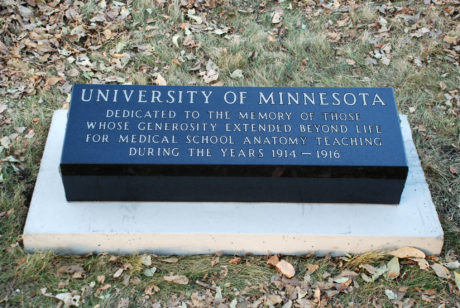
Tales From Pioneers & Soldiers Cemetery
206th in a Series
By SUE HUNTER WEIR
There are 78 people buried in the cemetery whose last names were recorded simply as “unknown.” They might more accurately have been called “unidentified,” since it’s likely that someone, somewhere must have known them. But no one stepped forward to claim them and most, though not all, were buried at the expense of the county in the cemetery’s paupers’ section, known as Section H.
Newspaper coverage of their deaths was spotty: some deaths appeared to be newsworthy, others not. In a few cases the papers printed a description of the person who had died. An unknown man who died in April 1876 was described as being “about five feet six inches in height, with a strong frame and dark complexion.” It was general enough that it could have fit any number of men, but the coroner at the time guessed that the man was from Davenport, Iowa, and “…presumed to be an Irishman and a Catholic.” The newspaper story does not make clear why he thought so.
Some of the deaths were accidental, others were due to natural causes, and a handful were suicides. It was the coroner’s responsibility to make a determination about which of those might be true. Eight of deaths were recorded as suicides but there might have been others, as well.
In many cases alcoholism was, if not the primary cause of death, a contributing factor, and that might explain why some of the men were not claimed. They may have been estranged from family and friends. But others likely were missed by someone. When the coroner needed help identifying a body, he opened the morgue to visitors, often hundreds of them, who filed past a coffin hoping to find a loved one.
The stories of the 28 babies or “foundlings” whose names were unknown are particularly grim. Several of their deaths were attributed to “infanticide,” that is, they had been born alive but died violently shortly afterward. They had been abandoned rather than buried. Newspapers told the stories of a few of these babies but most passed by unnoticed. Although the majority of the babies were eventually buried in Section H, at least two were provided with private burials. One unidentified baby was buried in the family plot of Dr. William Huntington Leonard, a Civil War veteran and the City’s first health officer. One child, identified simply as Baby Paul, was buried by the Church Home for Babies, an orphanage for abandoned and homeless children, founded by Annette Relf, who later founded Sheltering Arms.
Seven of the unidentified were recorded as an “unknown child.” Three of them drowned. One was thought to be about ten years old, the ages of the other six is not known. One boy was thought to be named Edward, another was described simply as a “German boy.”
How did these adults, babies, and children come to be lost? People did not have the types of identification that we carry today. Other than military papers or perhaps immigration documents, they would have been unable to prove who they were. They were simply who they said they were. There was no forensic science to speak of: no DNA, no dental records, no photographs or other modern means of identifying those who were found. The coroner had little to work with and had to rely on clues such as laundry marks found on clothing or letters that he found in pockets. But he had no way of knowing whether the letters were written to, or written by the person who carried them.
Twenty of the men (and, curiously, there are no unknown women) were subjects of study by University of Minnesota medical students during the academic years of 1914-1916. On September 9, 2012, the University’s Bequest Program held a memorial service for those men and for 230 others whose names are known. Their graves are marked by a beautiful, black granite marker which acknowledges the contributions of these men—all unclaimed, some unwanted—to the study and practice of medicine. The graves of all of the other “unknowns” are unmarked.









